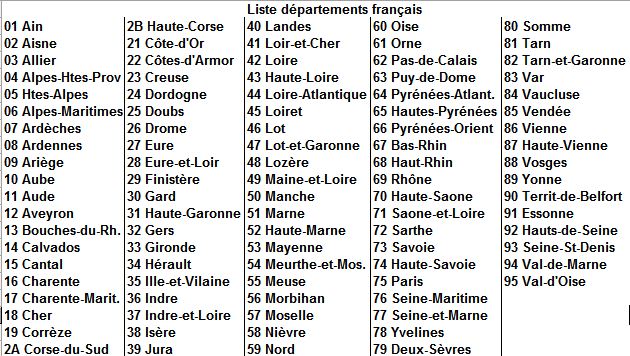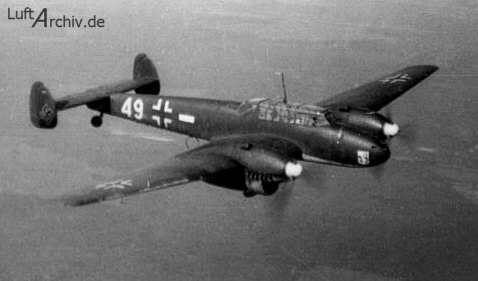
|
Crash - Halifax - Mk.II - s/n W7851 TL°Y |

|

|
Crash - Halifax - Mk.II - s/n W7851 TL°Y |

|
| Fiche France-Crashes 39-45 modifiée le 04-06-2025 | |||||
| Date | Nation |
 Département Département |
Unité | - | Mission |
|---|---|---|---|---|---|
| 09-03-1943 | Angleterre/Common. | Nord | 35 Sq RAF Madras Presidency | Nürnberg (Nuremberg) (All) - 335 avions | |
| Localisation | Près d'Ors - 8 Km E de Cateau-Cambrésis |
|---|---|
| Circonstances |
Abattu par un chasseur de nuit  Messerschmitt Bf110 - Photo du site www.luftarchiv.deBf110 3C+MB (Oblt Ludwig Meister du Stab I./NJG4) -3300m - 00h30 |
| Commentaires | Décollage 19h24 le 8 de Graveley , Cambridgeshire UK |
| Sources ** |
J-L Maillet (sources: lostbombers / CWGC) / Conscript-Heroes / CometeLine / https://35squadron.wordpress.com/2018/11/16/captains-of-aircraft-1943 / Livre Nachtjagd Combat Archives par Theo BoitenNachtjagd |
| Historique | 04/01/2013=Modif lien rapport d'évasion 22/07/2013=Ajout liens photos - 20/04/2021=Ajout prénoms - 04/06/2025=Modif local/Ajout rapport,comm équip |
| Grade | Prenom | Nom | Poste | Corps | Etat |
 Lieu d'Inhumation Lieu d'Inhumation |
Commentaires |
|---|---|---|---|---|---|---|---|
| F/O | John Hilton | Brown | Pil | RAF VR | Décédé | Cim com de Cambrai (59) 1.B.1 * | 10928 – 22 ans – Né le 31/08/1920 Middleton, Lancs. UK - Fils de Harry et Annie (Hilton) Brow |
| Sgt | Albert George Murray | Coulam | Nav | RNZAF | Prisonnier | NZ.404900 – Né le 19/05/1917 Whanganui, New Zealand - Fils de George Henry et Emilie Martha (Bagnall) Coulam - Conjoint de Madeline D Gillett - Pow 42719 - Stalag Luft VI/IXC - Fiche de prisonnier WO 416/79/8 - †1999 | |
| F/Sgt | Patrick | Flynn | MitS | RAF VR | Décédé | Cim com de Cambrai (59) 1.B.2 * | 1174414 |
| F/Sgt | David Aitken | Sibbald | Rad/M | RNZAF | En fuite | NZ.411102 - DFM - Né le 14/06/1922 Marshland, N-Z - Fils de John et Ann Catherine (Aitken) Sibbald - Conjoint de Nancy Lambie - Evasion réseau Comete - Pyrénées/Espagne/Gibraltar - Rapport WO 208/3313/1214 - †2008 | |
| Sgt | Alan | Tacey | Mec | RAF | Prisonnier | 1057900 – Né le 29/04/1921 - Fils de Christopher et Dorcas (Tyso) Tacey - Conjoint de Eva Skelton - Pow 27744 - Stalag 344 - †1992 | |
| Sq/L | Gomer Donald | Waterer | Obs | RAF | Prisonnier | 77214 – Né le 01/05/1913 Chertsey, Surrey UK - Fils de Frank Gomer et Alice Linstead (Lilley) Waterer - Conjoint de Rozanne Patricia Pixley - Capturé le 09/03/43 vers Cambrai (59) - Pow 937 - Dulag Luft Oberursel (11/03/43)/Stalag Luft III Sagan (04/04/43)/Marlag-Milag Tarmstedt (04/02/45-10/04/45) - †2006 | |
| Sgt | Stanley Seymour | Vinicombe | MitA | RNZAF | Décédé | Cim com de Cambrai (59) 1.B.3 * | NZ.413286 – 22 ans – Né le 17/05/1920 Dunedin, N-Z - Fils de Walter Seymour et Annie Moir (Robertson) Vinicombe |
| Fiche tech | Correspondance grades | Abréviations utilisées | Filières d'évasion | Camps de Pow | Bases RAF/USAAF | Utilitaires |
|---|
|
Rapport Uffz Forke ( Oblt. Meister and his Funker Uffz. Forke in Bf110 F-4 3C+MB of Stab I./NJG4, flying a second Welle patrol from Laon-Athies in Raum 7 B, bagged the only Nachtjagd Abschuss on the bombers' return flight. Hans Forke recorded in his wartime diary: "8.3.1943. When we arrive in the box, all the Tommies have already marched past. Anyway, there's nothing more going on. We wait for the return flights, hoping they won't stay too long over the Reich. We fly as economically as possible, always at 6000 m. It's bloody cold up there and I get so drowsy and unhappy that what I'd most like is to go straight home. Finally we get a vector. We have the altitude advantage and manage it with complete success. At 4800 m and a range of 1300 m 1 acquire the target. We draw closer to it, no change in the Li-set, the Tommy is flying very sedately. At 400 m range Oblt. Meister can see the enemy machine. This time we don't position ourselves precisely beneath it since we have rather strong exhaust flames. The attack goes very quickly. My pilot puts a burst into it from dead astern and promptly moves off to port again. The Tommy's tail turret is burning and the fire is spreading further along the fuselage. The second and third attacks enlarge the fire and a parachute whizzes past our wing. They're leaving the sinking ship. I'm making a vigorous attempt to change the cannon ammunition drums. In vain! The fourth attack, with machine gun bullets only, finally produces the explosion. Burning, the hostile plane dives into the depths. Impact on the ground and now we must go home. Our time's up. They allowed us take off early, now however all the return flights are coming and we have to break off. After landing we look at our brave Marie-Berta, the spinners and the Li-set antennae are completely covered in oil. It's Tommy-oil that we got in the last explosion. Origine) – PARTIE I - (source : Livre Nachtjagd Combat Archives par Theo BoitenNachtjagd – Traduction DC via Google Lens): L'officier Meister et son Op Radio Uffz Forke à bord du Bf110 F-4 3C+MB du Stab I./NJG4, effectuant une deuxième patrouille Welle depuis Laon-Athies dans la Raum 7 B, ont abattu le seul Abschuss de la Nachtjagd lors du vol de retour des bombardiers. Hans Forke a noté dans son journal de guerre : « 8 mars 1943. Lorsque nous arrivons au poste, tous les Tommies sont déjà passés. De toute façon, il ne se passe plus rien. Nous attendons les vols de retour, en espérant qu'ils ne s'attarderont pas trop longtemps au-dessus du Reich. Nous volons le plus économiquement possible, toujours à 6 000 m. Il fait un froid de canard là-haut et je suis tellement somnolent et malheureux que je voudrais rentrer directement. » Finalement, nous obtenons un vecteur. Nous avons l'avantage de l'altitude et nous le gérons avec un succès total. À 4 800 m et à une portée de 1 300 m, j'atteins la cible. Nous nous en rapprochons, aucun changement dans le réglage Li, le Tommy vole très calmement. À 400 m, l'Oblt. Meister peut voir l'appareil ennemi. Cette fois, nous ne nous positionnons pas précisément en dessous, car nous avons des flammes d'échappement assez fortes. L'attaque est très rapide. Mon pilote tire une rafale de l'arrière et L'avion se remet rapidement en route vers le port. La tourelle de queue du Tommy brûle et le feu se propage le long du fuselage. Les deuxième et troisième attaques intensifient le feu et un parachute file à toute allure devant notre aile. Ils quittent le navire en perdition. Je tente vigoureusement de changer les tambours de munitions du canon. En vain ! La quatrième attaque, avec seulement des balles de mitrailleuse, provoque enfin l'explosion. En feu, l'avion ennemi plonge dans les profondeurs. L'impact au sol, et nous devons rentrer. Notre temps est écoulé. Ils nous ont permis de décoller plus tôt que prévu, mais maintenant tous les vols de retour arrivent et nous devons nous interrompre. Après l'atterrissage, nous contemplons notre courageuse Marie-Berta : les cônes d'hélice et les antennes Li-set sont entièrement recouverts d'huile. C'est l'huile de Tommy que nous avons reçue lors de la dernière explosion. Rapport Uffz Forke ( 9.3.1943. I drive with Oblt. Meister to the crash site at the village of Ors near Le Cateau (8 km east of the latter). Debris is strewn over a wide area. Here a panel is hanging on a tree, there a piece of engine has buried itself in the earth and over there lies the cockpit. The pieces of this Halifax, as we can now identify it, cover an area surface with a radius of about 1 km. I take snaps of some of it. Of the enemy crew, four are dead (three of them were already in coffins); three bailed out, two of whom have been caught. These two, an Oberleutnant (Flying Officer) and a Sergeant, were also at the crash site. They'd been brought here to identify the dead men. We spoke to them; the Oblt. spoke passable German. Oblt. Meister and I were clambering around in the wreckage and we took for granted that the two of them had already been told that we'd shot them down. So my "cabbie" says to them, "Well, did you see us?" Perplexed look. Then one said, "Who has shot us down?" Now he found out for the first time and with that his dazedness dissipated somewhat and he spoke more lucidly. So we made more small talk. Actually the brothers have really crummy kit. The Flying Officer's jacket was stiffer than the worst of our squaddies uniforms. Also, certain parts of the machine exhibited meagre substitute materials; there were no copper flasks to he found. Above all, the equipment (flying suit, fur-lined boots) bore no comparison with our ones. We are significantly better off 13.3.1943. My pilot brought along something new about our victory. The third man, who had bailed out, had now been caught an well. He was a Major and Gruppenkommandeur". Actually, this was S/Ldr. G.D. Waterer, the Navigation Leader of No. 35 Squadron. Origine) – PARTIE II - (source : Livre Nachtjagd Combat Archives par Theo BoitenNachtjagd – Traduction DC via Google Lens): 9.3.1943. Je conduis avec l'Oblt. Meister jusqu'au lieu du crash, au village d'Ors, près du Cateau (8 km à l'est de ce dernier). Des débris jonchent le sol. Sur une vaste zone. Ici, un panneau est accroché à un arbre, là, un morceau de moteur est enfoui dans la terre et là, le cockpit. Les débris de ce Halifax, tels que nous pouvons maintenant les identifier, couvrent une surface d'environ 1 km de rayon. J'en prends quelques clichés. Parmi les membres de l'équipage ennemi, quatre sont morts (dont trois étaient déjà dans des cercueils) ; trois ont sauté en parachute, dont deux ont été capturés. Ces deux-là, un Oberleutnant (officier d'aviation) et un Sergent, étaient également sur les lieux du crash. Ils avaient été amenés ici pour identifier les morts. Nous leur avons parlé ; l'Oblt. parlait un allemand correct. L'Oblt. Meister et moi grimpions dans l'épave et nous pensions qu'ils avaient déjà été informés que nous les avions abattus. Alors mon Terme d'argot - Littéralement: chauffeur de taxi"Cabbie" leur dit : « Alors, vous nous avez vus ?» Regard perplexe. Puis l'un d'eux demanda : « Qui nous a abattus ?» Il l'apprit pour la première fois et, avec cela, sa stupeur se dissipa quelque peu. Et il parlait plus lucidement. Nous avons donc continué à bavarder. En fait, les deux aviateurs avaient un équipement vraiment minable. La veste du lieutenant d'aviation était plus rigide que le pire de nos uniformes de soldats. De plus, certaines pièces de l'appareil présentaient des matériaux de substitution médiocres ; aucune gourde en cuivre n'a été trouvée. Surtout, l'équipement (combinaison de vol, bottes fourrées) n'était pas comparable au nôtre. Nous étions bien mieux lotis le 13 mars 1943. Mon pilote nous a rapporté quelque chose de nouveau concernant notre victoire. Le troisième homme, qui avait sauté en parachute, était maintenant pris au piège. Il était major et Gruppenkommandeur. En réalité, il s'agissait du capitaine d'escadron G.D. Waterer, chef de la navigation du 35 Squadron. Récit et photos F/Sgt Sibbald sur www.evasioncomete.be Biographie Oblt Ludwig Meister sur le site www.cieldegloire.fr |